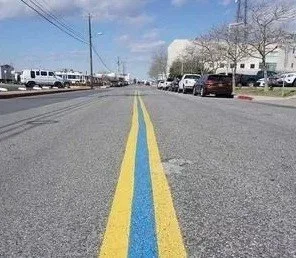The button-down shirt has long been a timeless wardrobe essential. One subtle detail often overlooked is the loop on the back of the shirt, known as the “locker loop.” This feature carries a rich history and unexpected social significance, rooted in naval pragmatism, Ivy League symbolism, and modern fashion trends.
### The Naval Origins
Picture sailors in the Navy with limited storage space for their uniforms. Seeking a practical solution, the locker loops were implemented to allow easier hanging. This choice was functional rather than fashionable, designed to maximize space and keep uniforms tidy.
### Transition to Civilian Fashion
In the 1960s, locker loops made their way into civilian fashion, marking the beginning of their broader appeal. The clothing manufacturer GANT played a pivotal role in popularizing the locker loop. GANT introduced these loops to keep the shirts of Ivy League students wrinkle-free in lockers, hence the name “locker loop.” This marketing angle proved especially successful, appealing to the style-conscious Ivy League community.
### Social Symbolism
Locker loops quickly became more than just a practical feature. Male students would often remove the loop to signal a change in their relationship status, indicating they were no longer single. In turn, women of the 60s would reciprocate by wearing their partner’s scarf. This innocent tradition took a mischievous turn when daring individuals playfully yanked loops off the shirts of those they fancied, sometimes tearing a sizeable hole in the shirt.
### Ivy League Influence
As Ivy League style permeated fashion, locker loops became a symbol of good taste and high quality. Iconic brands like GANT, Sero, Wren, Creighton, and Eagle created their own versions of the locker loop. Student-athletes embraced locker loops during sporting events, showcasing the loop’s adaptability beyond its original purpose.
### Modern Day
Today, locker loops on the back of shirts persist as a nod to history and a means of personalization. While modern hangers have diminished the loop’s practicality, its presence is an homage to the once-prominent Ivy League style. Retailers like Ralph Lauren and J.Crew continue to offer shirts with locker loops, allowing enthusiasts of the past to embrace this subtle yet storied detail. For those with distinct preferences, adding a loop on the back of a shirt offers a customizable aspect to button-down options. Tailors can easily remove or add loops based on individual preferences, aligning garments with both historical tradition and personal taste.
### Conclusion
Though no longer serving a functional purpose, locker loops persist as a fashion vestige. Whether used to hang shirts in lockers or simply as a design element, locker loops remind us of the evolution of menswear and its connection to functional beginnings. The next time you button up a shirt, take a moment to appreciate the subtle charm and rich history encapsulated in this unassuming loop.





